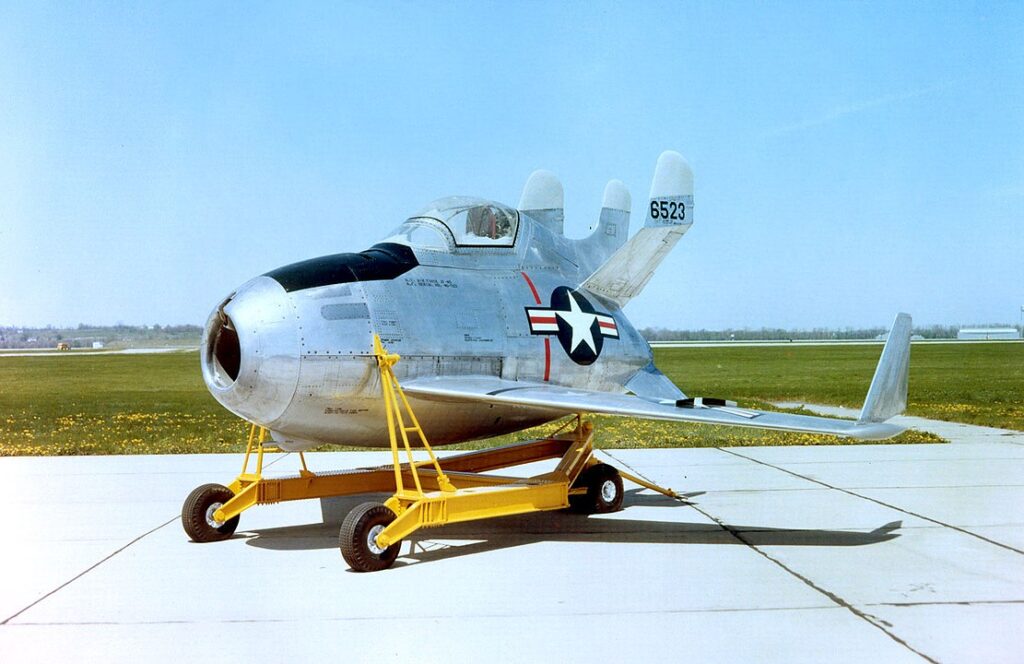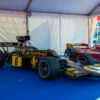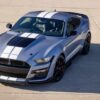Military aircraft come in all shapes and sizes, but some designs are so unique they stand out from the rest. In this article, we explore the top 17 military aircraft with the strangest looks. From unconventional shapes to unexpected features, these planes are as intriguing as they are functional. Let’s dive into the world of bizarre and fascinating military aviation.
Contents
Northrop Grumman B-2 Spirit

The Northrop Grumman B-2 Spirit, also known as the “Stealth Bomber,” boasts a flying wing design that makes it resemble a sci-fi spacecraft. Its sleek, bat-like appearance, combined with its radar-evading capabilities, creates a striking and unusual profile. This aircraft is engineered to penetrate dense anti-aircraft defenses and deliver precision strikes, making its look as functional as it is bizarre.
Lockheed F-117 Nighthawk

The Lockheed F-117 Nighthawk is famous for its faceted, angular design, which was developed to scatter radar waves and minimize detection. Its flat, diamond-shaped surfaces and sharp angles give it an almost alien look. As the world’s first operational stealth aircraft, its unique appearance set it apart from all other military aircraft of its time.
Northrop Tacit Blue

Nicknamed “The Whale” due to its bulbous, whale-like shape, the Northrop Tacit Blue was an experimental aircraft designed to test stealth technology and battlefield surveillance. Its unusual, rounded body and smooth surfaces helped to minimize its radar cross-section, contributing to its strange yet innovative look.
Sukhoi Su-47 Berkut

The Sukhoi Su-47 Berkut features forward-swept wings, a design rarely seen in military aircraft. This Russian experimental fighter has a futuristic appearance, with its wings curving forward rather than backward. The design provides superior maneuverability and agility, making it as functional as it is visually striking.
Bartini Beriev VVA-14

The Soviet Bartini Beriev VVA-14 was designed to take off from water and fly at high speeds, resulting in an unusual amphibious plane. Its unique configuration includes a large, central hull with pontoons, giving it a distinctive appearance. It was intended for anti-submarine warfare and could operate in both air and water.
Horten Ho 229

The Horten Ho 229 is a late WWII German prototype with a sleek, jet-powered flying wing design. Its tailless, streamlined shape was revolutionary for its time and contributed to its strange, almost otherworldly look. This aircraft was one of the first to incorporate stealth technology concepts.
Boeing X-32

Competing in the Joint Strike Fighter program, the Boeing X-32 is known for its large, gaping air intake, which dominates the front of the aircraft. This feature, along with its bulbous body and delta wing, gives it a distinctly odd appearance. Despite its unconventional looks, it was a serious contender in the fighter jet competition.
Grumman X-29

The Grumman X-29 features forward-swept wings, which give it a distinctive and unconventional look. This experimental aircraft was designed to test new aerodynamic concepts and advanced materials. Its forward-swept wings improve maneuverability and control, making it an important technological milestone.
Fairey Rotodyne

The Fairey Rotodyne was a British compound gyroplane, combining features of helicopters and fixed-wing aircraft. Its large rotor and short wings created a unique hybrid design. The Rotodyne was intended for short takeoff and landing capabilities, blending the best of both aviation worlds.
Vought V-173 “Flying Pancake”

The Vought V-173, known as the “Flying Pancake,” has a circular, disc-shaped body that is unlike any other aircraft design. Its unusual shape was intended to provide high lift and short takeoff capabilities. This experimental aircraft’s odd appearance earned it a place among the strangest military planes ever built.
McDonnell XF-85 Goblin

The McDonnell XF-85 Goblin is a tiny “parasite” fighter designed to be deployed from a bomber’s bomb bay. Its compact, egg-like shape and small size make it one of the strangest-looking aircraft. Despite its unusual design, it aimed to provide bomber defense during long-range missions.
Convair F2Y Sea Dart

The Convair F2Y Sea Dart is a seaplane fighter equipped with retractable hydro-skis for water takeoff and landing. Its sleek, needle-like fuselage and wing-mounted skis give it a unique and unconventional appearance. This aircraft was an innovative attempt to create a jet-powered seaplane fighter.
NASA AD-1

The NASA AD-1 features an oblique wing that could pivot, changing its angle mid-flight. This experimental design aimed to reduce drag and improve efficiency at high speeds. Its asymmetrical, pivoting wing makes it one of the most visually peculiar aircraft ever created.
Douglas X-3 Stiletto

With its long, slender fuselage and tiny wings, the Douglas X-3 Stiletto looks more like a missile than an aircraft. Designed to test high-speed flight and materials, its sharp, needle-like appearance was intended to achieve supersonic speeds. This experimental jet’s unique shape set it apart from conventional aircraft.
SNECMA Coleoptere

The French SNECMA Coleoptere is an experimental VTOL aircraft with a cylindrical body and a large annular wing. Its vertical takeoff and landing capabilities, combined with its unusual ring-shaped wing, give it a distinctive and futuristic look. This design aimed to explore new possibilities in VTOL technology.
Northrop YB-49

The Northrop YB-49 is a jet-powered flying wing bomber developed in the late 1940s. Its tailless, all-wing design gives it a sleek and unconventional appearance. This innovative aircraft was one of the earliest attempts to create a practical flying wing bomber.
Avro Canada VZ-9 Avrocar

The Avro Canada VZ-9 Avrocar is a Canadian flying saucer-like VTOL aircraft. Its circular, disc-shaped body resembles a classic UFO. Designed for vertical takeoff and landing, this experimental aircraft’s appearance is as unconventional as its intended capabilities.
This article originally appeared in MyCarMakesNoise.
More from MyCarMakesNoise
15 Modest Trucks That Pack Serious Towing Strength

When it comes to towing, not all trucks need to be hulking giants to get the job done. Many modest-sized trucks offer impressive towing capacities, combining power, efficiency, and practicality. Read More
The Untold Histories of 15 Iconic Trains Around the World

Trains have long captured our imaginations with their journeys across picturesque landscapes and bustling cities. But beyond their familiar routes and iconic names, some trains carry fascinating, hidden stories. From espionage missions to secret royal travels, these lesser-known tales add a layer of intrigue to the world’s most famous trains. Read More
15 Rare Porsche Classics You’ll Have a Hard Time Finding

Porsche has a rich history of producing iconic sports cars, many of which have become highly sought-after classics. This list explores 15 of the rarest Porsche models ever made, each with its unique story and undeniable appeal. Read More














